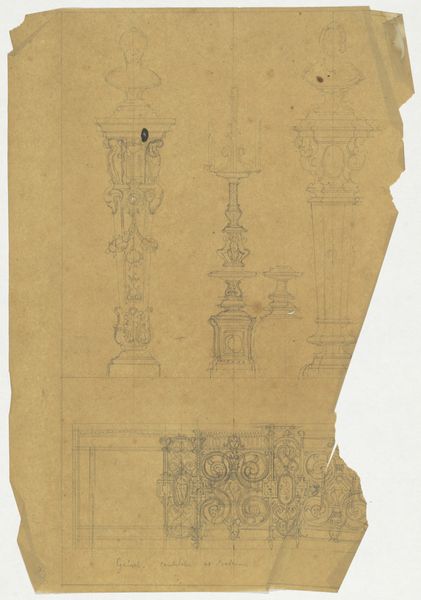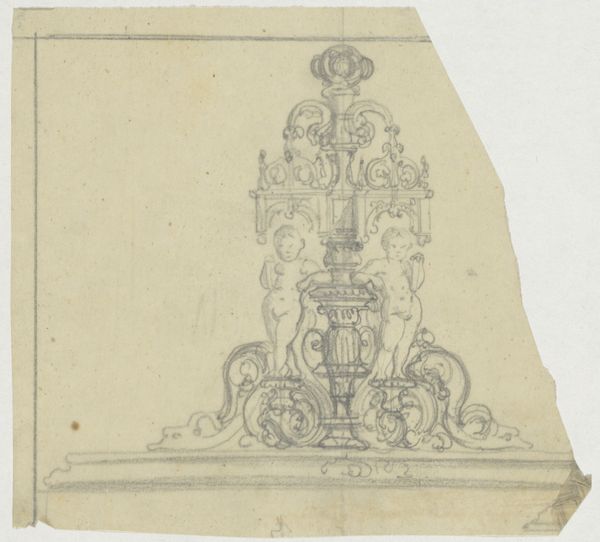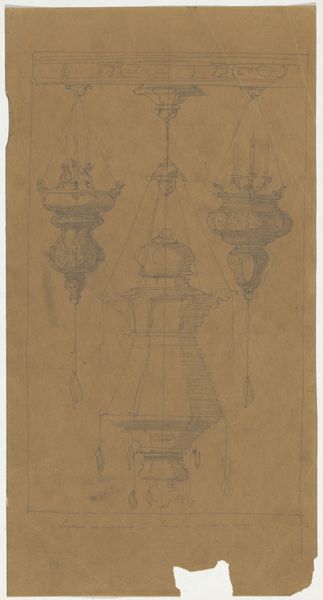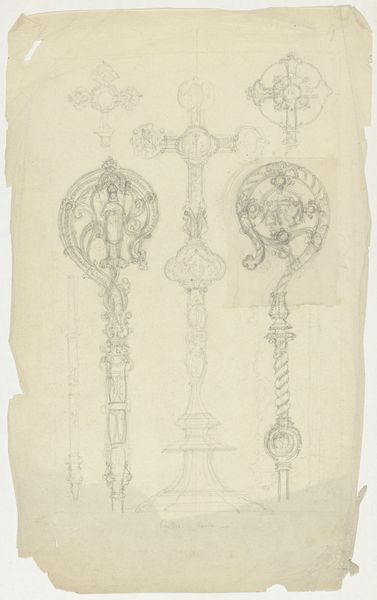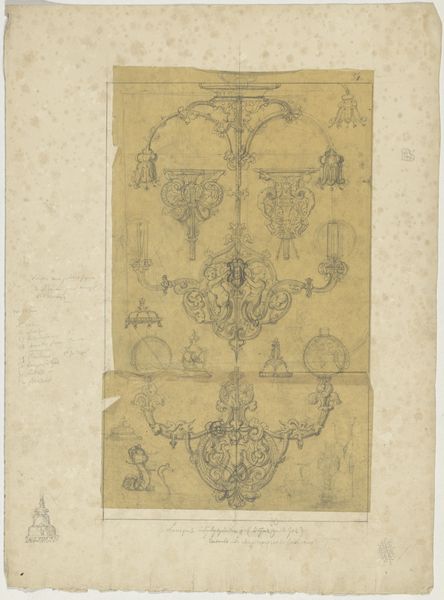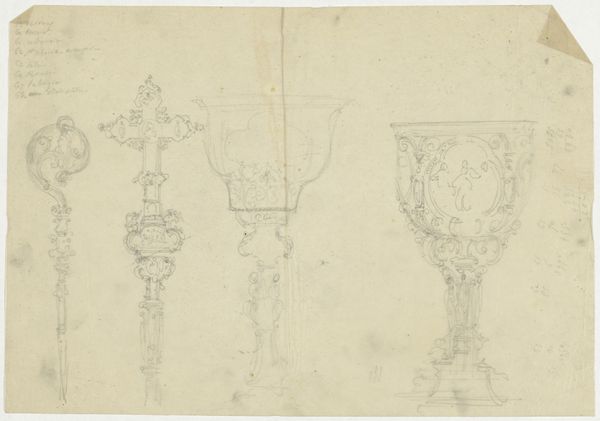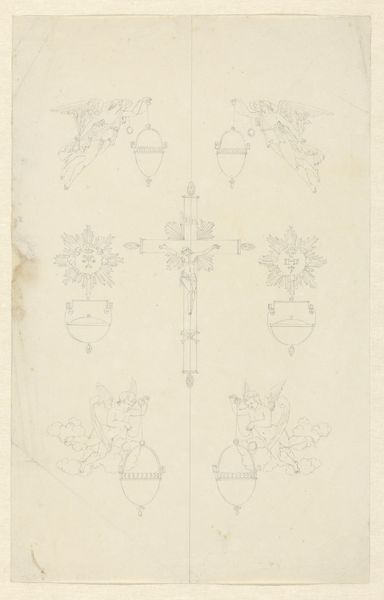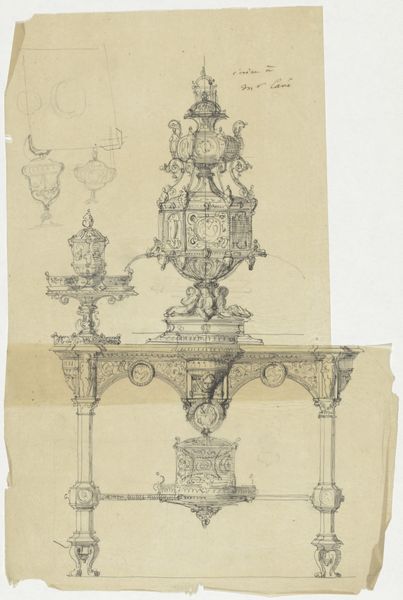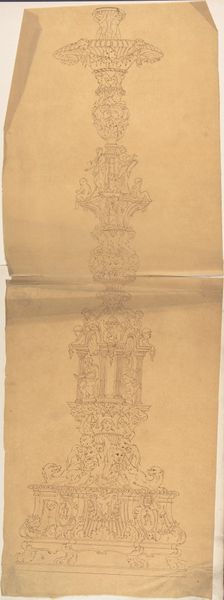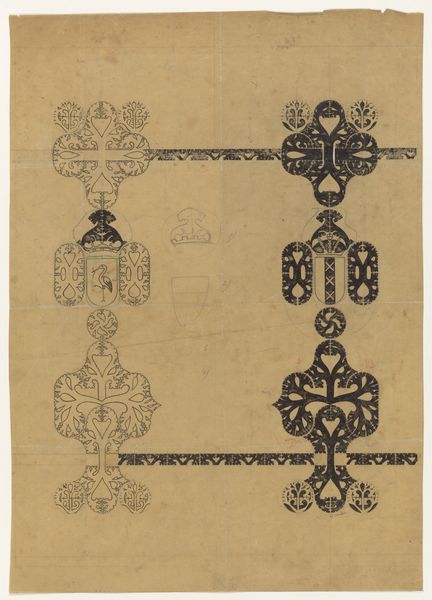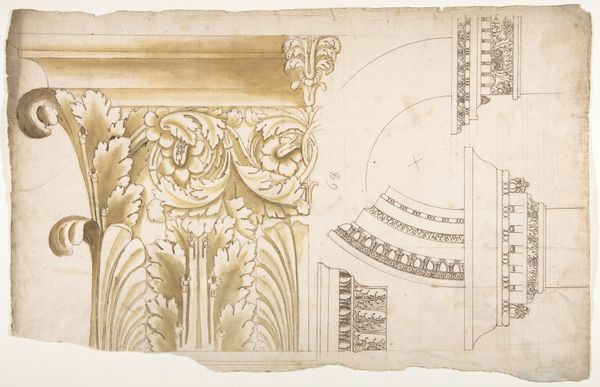
drawing, metal, pencil
#
drawing
#
toned paper
#
light pencil work
#
quirky sketch
#
neoclassicism
#
metal
#
incomplete sketchy
#
personal sketchbook
#
ink drawing experimentation
#
pencil
#
sketchbook drawing
#
watercolour illustration
#
sketchbook art
#
watercolor
Dimensions: height 280 mm, width 225 mm
Copyright: Rijks Museum: Open Domain
Curator: Let's turn our attention to this page of "Ontwerpen voor diverse bronzen voorwerpen," or Designs for Various Bronze Objects, attributed to Firma Feuchère, dating from around 1830 to 1850. What are your first impressions? Editor: It's a whisper of a drawing. The pencil work is so delicate, it feels like I'm looking at captured moonlight on aged paper. Sort of ghostly, almost hesitant, yet bursting with intricate detail. Curator: Indeed. We're seeing design sketches here, likely for presentation to a client, showcasing possible bronze objects – goblets, candlesticks, decorative mounts. The medium is pencil and possibly watercolor on toned paper. It shows their engagement in neoclassical styles. Editor: And you can almost smell the workshop dust, can’t you? Imagine the artisan's hands, calloused but precise, coaxing molten metal into these ornate forms. It's lovely, isn't it? All these designs laid out; a silent proposition and an entire ecosystem of skilled labor condensed onto one fragile page. Curator: Exactly. Each of these designs represented hours of labor, from the initial sketch to the finished bronze object. Feuchère's firm employed numerous highly skilled artisans. Considering the social context, it embodies a bridge between art and industry, showcasing how design translates into material production during this period. Editor: Absolutely. There's a raw, intimate energy in seeing this design work, like peering into the creative incubator that births the final gilded piece. And it is so cool and a tiny bit incomplete and imperfect. Much more intriguing than flawless perfection! Curator: A sentiment I share. It's like finding the secret language of creation. These are more than just sketches, aren't they? They are tangible traces of design translated into material realities. The circulation of design became easier in this period and it democratized art-making as it was spread among all classes, but not perfectly! Editor: No, never perfectly! And the incomplete nature gives each element such potency and charge to consider possibilities rather than fixed realities. It truly makes one think of all this artwork could have been. That's its power for me. Curator: An excellent observation, reminding us that material culture, even in its embryonic sketch form, carries within it untold stories. Editor: Yes, like echoes in the bronze—tales of hands, fire, and the alchemy of creation.
Comments
No comments
Be the first to comment and join the conversation on the ultimate creative platform.
